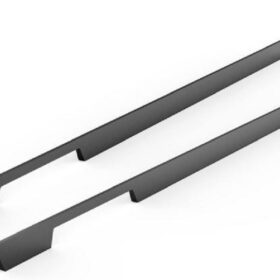Training Your Team to Install Modern Kitchen Cabinet Pulls Effectively
Installing modern kitchen cabinet pulls may seem like a simple task, but it requires precision and attention to detail to achieve a professional-looking finish. To ensure your team can efficiently and effectively install these pulls, comprehensive training is crucial. This article provides a comprehensive guide on training your team to install modern kitchen cabinet pulls expertly.
Understanding the Types of Modern Kitchen Cabinet Pulls
Modern kitchen cabinet pulls come in various shapes, sizes, and materials. Familiarize your team with the different types available, including:
– Bar pulls: Sleek and minimalist, these pulls extend the width of the cabinet door or drawer.
– Cup pulls: Hollow, cup-shaped pulls that provide a comfortable grip and a modern aesthetic.
– Edge pulls: Integrated into the cabinet door or drawer edge, these pulls offer a seamless design.
– Knobs: Round or square-shaped handles that add a touch of elegance.
Measuring and Marking for Pull Placement
Accurate measurement and marking are essential for proper pull installation. Train your team on:
– Using a tape measure and level to determine the center point of the cabinet door or drawer.
– Measuring the distance between the pulls (if installing multiple) to ensure even spacing.
– Marking the hole locations with a pencil or awl, ensuring they are level and aligned.
Drilling Pilot Holes and Installing the Screws
Pilot holes guide the screws and prevent splitting the cabinet material. Instruct your team to:
– Use a drill bit slightly smaller than the screw diameter to create pilot holes.
– Drive the screws into the pilot holes using a screwdriver or drill, ensuring they are secure but not overtightened.
– Check the pull’s alignment and make any necessary adjustments before tightening the screws fully.
Attaching the Pulls
Properly attaching the pulls completes the installation process. Train your team on:
– Holding the pull in place and aligning it with the screw holes.
– Inserting the screws into the holes and tightening them with a screwdriver or drill.
– Using a uniform torque to ensure the pulls are securely fastened.
– Checking the pull’s tightness and functionality after installation.
Troubleshooting Common Issues
Even experienced installers may encounter occasional issues. Train your team to recognize and resolve common problems, such as:
– Misaligned pulls: Adjust the screws to reposition the pull.
– Loose screws: Tighten the screws firmly but avoid overtightening.
– Split cabinet material: Use smaller pilot holes or drill them deeper to prevent splitting.
Additional Tips for Effective Pull Installation
Beyond the technical aspects, provide your team with additional tips for professional results:
– Clean the cabinet surface: Remove any dirt or debris before installing the pulls.
– Use a hardware template: If multiple pulls are installed, use a template to ensure consistent spacing and alignment.
– Consider the cabinet’s design: Match the pull’s style and finish to the cabinet’s overall aesthetic.
– Provide proper lighting: Adequate lighting ensures visibility during installation.
– Inspect the pulls regularly: Check the pulls for tightness and proper alignment to prevent any issues.
-
2024-11-29Top Trends in Modern Kitchen Cabinet Pulls for 2024
-
2024-11-28The Ultimate Guide to Modern Kitchen Cabinet Pulls- Materials, Styles, and Tips
-
2024-11-27Elevate Your Kitchen Design with These Must-Have Modern Cabinet Pulls
-
2024-11-26Sleek and Stylish- The Best Modern Kitchen Cabinet Pulls for a Contemporary Look










